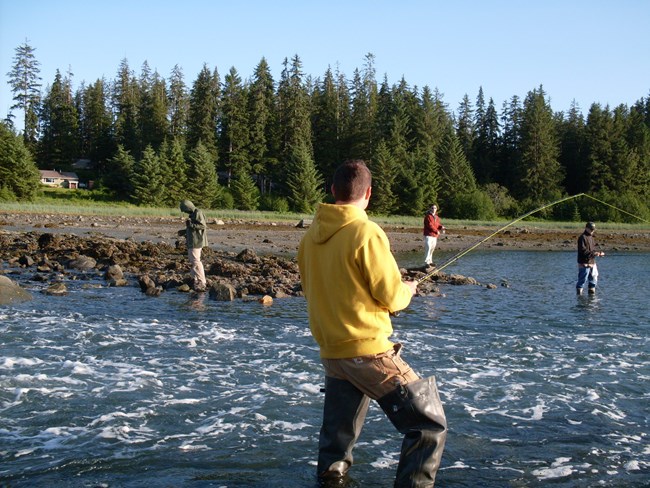
NPS Photo Metals (such as mercury) and toxic compounds (like pesticides) can come down from the air and build up in the food chain causing behavioral, neurological, and reproductive effects in fish, birds, wildlife, and even humans.
What are toxics?Air toxics include heavy metals like mercury, as well as persistent organic pollutants (POPs) like pesticides and DDT. These airborne contaminants are especially harmful, because they are long-lasting and do not break down in the environment, can build up in tissues of organisms, and have toxic effects. 
NPS Photo Mercury, pesticides, and polychlorinated biphenyls (PCBs) can enter the food chain in areas impacted by air pollution. The National Park Service is concerned about these and other air toxics because they increase in concentration with each level of the food chain and can become serious health threats to wildlife and humans (as shown in the figure on the left). Although fish are a lean, low-calorie source of protein and are important in a healthy diet, eating fish is the main pathway for human (and wildlife) exposure to mercury, pesticides, PCBs, and other contaminants. How can air toxics affect your health?The toxic form of mercury, methylmercury, impairs neurological development in fetuses, infants, and children. Other effects can include lower reproductive success, impaired growth and development, behavioral abnormalities, reduced immune response, disease, and decreased survival. What are the symptoms of toxics exposure?Symptoms can be different depending on the type of toxic compound. Concerned citizens are encouraged to explore this issue through health regulatory agencies including the Agency for Toxic Substances and Disease Registry and the Food & Drug Administration. Who is at risk?People who eat fish are most at risk for consuming metals and toxic compounds. However, certain groups of people are most at risk due to the toxic effects on fetal growth and childhood development. These groups include women of child-bearing age and children. Additionally, subsistence fish consumers, such as some native populations, are more at risk because they rely on fish for their diets. How can I avoid unhealthy exposure?The harm to humans from air toxics results from dietary ingestion, rather than airborne exposure. This is unlike human health concerns relating to other air pollutants including ozone and particulate matter.
How do toxics/mercury affect national parks?Airborne contaminants including mercury and pesticides have toxic effects that can harm human and wildlife health. Over 275 million annual visitors to U.S. national parks trust the National Park Service to both give them opportunities for recreational activities such as fishing and observing birds and wildlife, as well as take care of all the natural systems within parks. Toxic air contaminants are transported to national parks from pollution sources as far away as Europe and Asia, and as near as the local county. Learn more » |
Last updated: September 15, 2025
